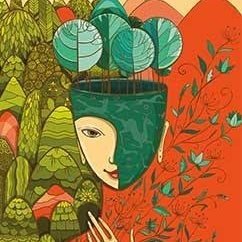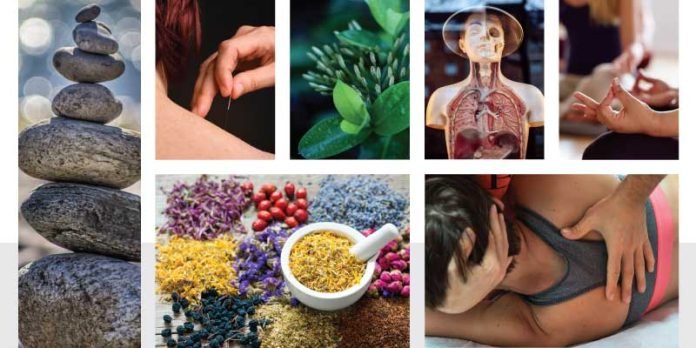- Acupuncture: Acupuncture is a traditional Chinese medicine practice that involves inserting thin needles into specific points on the body to alleviate pain, balance the body’s energy, and promote overall health. This therapy is based on the concept of Qi (life force energy) and meridians (energy channels) in the body. Some strengths of acupuncture include its ability to treat various conditions, such as chronic pain, headaches, and allergies, with minimal side effects. It has become widely accepted in many Western countries and is often combined with conventional medical treatments. Some resources on acupuncture include:
- NIH National Center for Complementary and Integrative Health (NCCIH): https://www.nccih.nih.gov/health/acupuncture-in-depth
- World Health Organization (WHO) on acupuncture: https://www.who.int/news-room/fact-sheets/detail/acupuncture
- Homeopathy: Homeopathy is an alternative therapy based on the principle of “like cures like,” which means that substances causing symptoms in a healthy person can be used to treat similar symptoms in a sick person. Homeopathic remedies are made from natural substances, which are diluted to an extreme degree. Homeopathy’s strength lies in its non-invasive, individualized approach to treating illnesses with minimal side effects. However, its scientific basis is not widely accepted, and many consider it a pseudoscience. Some resources on homeopathy include:
- British Homeopathic Association: https://www.britishhomeopathic.org
- Homeopathy Research Institute: https://www.hri-research.org
- Chiropractic: Chiropractic is an alternative therapy that focuses on the diagnosis and treatment of musculoskeletal disorders, particularly those affecting the spine. Chiropractors use manual adjustments and other techniques to realign the spine and alleviate pain. Its strengths include its effectiveness in treating back pain, neck pain, and headaches. It has gained significant acceptance in society and is often covered by insurance plans. Some resources on chiropractic include:
- American Chiropractic Association: https://www.acatoday.org
- European Chiropractors’ Union: https://www.chiropractic-ecu.org
- Naturopathy: Naturopathy is a holistic healthcare system that emphasizes the body’s inherent self-healing abilities. It combines a variety of natural therapies, such as herbal medicine, nutrition, hydrotherapy, and physical medicine, to promote overall health and wellness. Its strengths include its focus on prevention, personalized treatment plans, and emphasis on patient education. Naturopathy has gained acceptance in various countries, but its scientific basis and regulation vary widely. Some resources on naturopathy include:
- American Association of Naturopathic Physicians: https://www.naturopathic.org
- European Federation of Naturopaths: https://www.efnweb.org
- Ayurveda: Ayurveda is a traditional Indian medicine system that focuses on achieving a balance of physical, mental, and spiritual health through diet, lifestyle, herbal remedies, and various therapies. Its strengths include its holistic approach, extensive knowledge of herbal medicine, and emphasis on prevention. While Ayurveda has gained some acceptance in Western countries, it remains primarily practiced in India and its neighboring countries. Some resources on Ayurveda include:
- National Ayurvedic Medical Association (NAMA): https://www.ayurvedanama.org
- The Ayurvedic Institute: https://www.ayurveda.com
- Reiki: Reiki is a form of energy healing that originated in Japan. Practitioners channel universal life force energy through their hands and into the client’s body to promote physical and emotional healing. Its strengths include its non-invasive nature, ability to complement other therapies, and potential for self-treatment.
Reiki has gained popularity in Western countries but is not as widely accepted as some other alternative therapies due to limited scientific evidence. Some resources on Reiki include:
- International Association of Reiki Professionals (IARP): https://iarp.org
- The Reiki Association: https://www.reikiassociation.net
- Reflexology: Reflexology is a therapy that involves applying pressure to specific points on the feet, hands, or ears, which are believed to correspond to various organs and systems in the body. Its strengths include its non-invasive nature, ability to address multiple health concerns, and potential for self-treatment. Reflexology has gained some acceptance in Western countries, but its scientific basis remains debated. Some resources on reflexology include:
- Reflexology Association of America: https://www.reflexology-usa.org
- Association of Reflexologists (UK): https://www.aor.org.uk
- Aromatherapy: Aromatherapy is the use of essential oils extracted from plants for therapeutic purposes. It aims to promote relaxation, enhance mood, and support overall well-being through inhalation or topical application. Its strengths include its ability to address a variety of health concerns, such as stress, anxiety, and sleep issues, with minimal side effects. Aromatherapy has gained acceptance in Western countries and is often incorporated into massage therapy, spa treatments, and other wellness practices. Some resources on aromatherapy include:
- National Association for Holistic Aromatherapy (NAHA): https://naha.org
- International Federation of Aromatherapists (IFA): https://www.ifaroma.org
- Yoga Therapy: Yoga therapy is the application of yoga principles and practices to promote health and manage various physical, mental, and emotional conditions. Its strengths include its holistic approach, ability to address a variety of health concerns, and potential for self-practice. Yoga therapy has gained widespread acceptance in Western countries and is often incorporated into healthcare settings, such as hospitals and rehabilitation centers. Some resources on yoga therapy include:
- International Association of Yoga Therapists (IAYT): https://www.iayt.org
- Yoga Alliance: https://www.yogaalliance.org
- Traditional Chinese Medicine (TCM): TCM is a comprehensive system of healthcare that includes acupuncture, herbal medicine, massage therapy (tui na), exercise (qi gong and tai chi), and dietary therapy. Its strengths include its holistic approach, extensive knowledge of herbal medicine, and ability to address a wide range of health concerns. TCM has gained acceptance in Western countries, but its scientific basis and regulation vary widely. Some resources on TCM include:
- National Center for Complementary and Integrative Health (NCCIH) on TCM: https://www.nccih.nih.gov/health/traditional-chinese-medicine-what-you-need-to-know
- American College of Traditional Chinese Medicine (ACTCM): https://www.actcm.edu
TEN POSITIVE AFFIRMATIONS TO HELP AS YOU EMBRACE COMPLEMENTARY OR ALTERNATIVE THERAPIES (please remember to always consult a registered physician for your health needs before embarking on alternative therapy treatments)
- “I am grateful for the healing power of alternative therapies that support my overall well-being.”
- “Every day, I am choosing holistic health practices that nourish and strengthen my body, mind, and spirit.”
- “My body has an innate ability to heal, and I trust in the natural remedies and therapies that support its healing process.”
- “I am deserving of vibrant health, and I embrace the alternative therapies that promote balance and vitality in my life.”
- “I release any doubts or fears and fully embrace the positive impact that complementary therapies have on my well-being.”
- “I am open to receiving the wisdom and guidance from alternative therapies, allowing them to guide me towards optimal health.”
- “My commitment to self-care and alternative therapies empowers me to maintain a harmonious balance in my life.”
- “I am grateful for the practitioners and therapists who provide me with holistic care and guidance on my journey to good health.”
- “Every day, my body is becoming stronger and healthier through the alternative therapies I embrace.”
- “I trust in the power of alternative therapies to support my health, and I am grateful for the positive transformation they bring to my life.”



